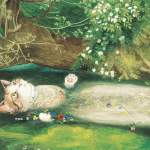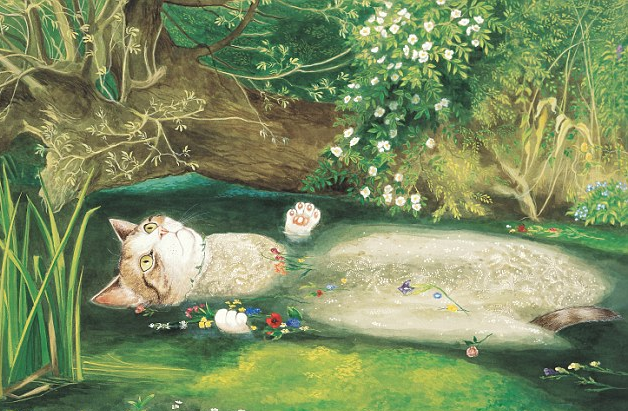 Femininity is an interesting thing in Collins’ Woman in White. In my previous post, I talked about how it seemed like Laura was the perfect candidate for a traumatic incident (I so wish I had been wrong for her sake) because her specific brand of femininity allowed for her to be a projection of anyone’s future. In my opinion, Laura’s fragility is an extension of her expression of femininity, which definitely plays into the familiar trope of “Ill Girls.”
Femininity is an interesting thing in Collins’ Woman in White. In my previous post, I talked about how it seemed like Laura was the perfect candidate for a traumatic incident (I so wish I had been wrong for her sake) because her specific brand of femininity allowed for her to be a projection of anyone’s future. In my opinion, Laura’s fragility is an extension of her expression of femininity, which definitely plays into the familiar trope of “Ill Girls.”
Coming out of the prominently Victorian notion that women are delicate creatures, combined with the rise of constrictive corsets, illnesses that don’t actually exist (like hysteria) got you sent to an asylum or relegated to a ‘fainting couch’. In terms of writing, this idea of femininity became a trope in which slight, beautiful women with alabaster skin became sick in novels with things like “consumption” or an unnamable illness that made her eyes brighter and skin paler, only pronouncing her beauty more. This is the idea of the delicate “Ill Girl” – the innocently fictional young woman who needs attention and reassurance that she is admired.
Laura Fairlie and Anne Catherick both embody types of the Ill Girl, one more desirable than the other. Anne resembles more of a similarly ill character, Sweeney Todd’s wife, Lucy, who goes mad and becomes homeless and unrecognizable after she is publicly raped. Anne, after escaping from the asylum she was imprisoned in, seems sickly and pale to Walter as well as mad. She offers cryptic messages (like Lucy), and Walter notices that she may have been beautiful before her madness (also like Lucy). Her illness is not something to pine after, she is a harrowed shell of her former self, and her mutable identity is taken advantage of by Sir Glyde and Fosco who fake Laura’s death. This aversion to the Ill Girl trope makes Laura’s experience with it all the more visible. She is defined by her madness, not her fragility or femininity – she is the trope namer of the “Woman in White”.
Living in a tiny apartment together, Laura is tended by Marian and Walter, who despair about how ill and unlike herself she is. When she is worried that she’s a burden and not at all contributing, Walter assures her that he could sell her paintings (even though he only keeps them himself). She is portrayed as a tragic character, her beauty and frailty expounded upon with her post-asylum sickness, but like the sweet, tragic Ophelia from Hamlet, she remains static and one-dimensional. She has the opportunity to rise above her circumstances, but is kept in place as a porcelain doll to take care of. She is so close to crumbling into insanity like Ophelia does – only to be a reason for Walter to feel heroic. Unsurprisingly, she only regains her health when Walter and Marian’s circumstances start to improve, and she is almost back to her old when Walter and Laura finally marry.
Sources:
http://tvtropes.org/pmwiki/pmwiki.php/Main/VictorianNovelDisease
http://www.shakespeare-online.com/plays/hamlet/opheliacharacter.html
http://tvtropes.org/pmwiki/pmwiki.php/Main/TheOphelia
http://tvtropes.org/pmwiki/pmwiki.php/Main/IllGirl
